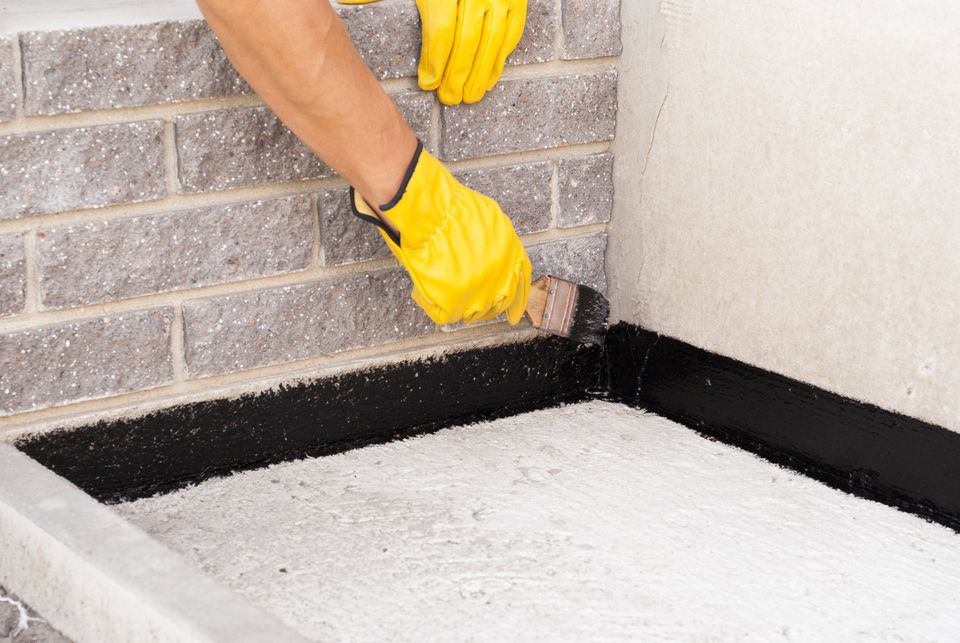Waterproofing a Flood-Prone Basement. What You Should Know.
Basements are often the last priority of homeowners—many people use their basements as storage areas or as places for large appliances like the heater, washing machine, and sump pump. So, many don’t see the need for renovating this area and making it look presentable. However, basement walls need more than the standard finishing, especially as time passes. If you have lived in your home for a while or purchased a home from a previous buyer, you need basement waterproofing. Here are some things to remember.
You Must Identify the Source of the Water
Concrete is porous, so you will likely see wet streaks where the water comes in. These streaks appear at the corners of windows, along cracks, around pipes like water supply lines, and between mortar joints. If the entire wall is wet, you need to conduct a condensation test. Start by wiping dry an area of the wall and attaching a square foot piece of aluminum foil to the wall. Leave this on for 24 hours. After a day, check the underside of the foil—if it is wet, the water is coming from outside. If the foil is dry, the moisture is probably coming from elsewhere in the basement.
Remove Standing Water before Making Repairs
Make sure the floor in your basement is completely dry before you work on repairs. A flooded basement increases the risk of electrocution, so get rid of the water before you start. Turn off the power to the basement and use a utility pump to discharge the water to your yard.
Address Cracks and Window Well Leaks
When builders pour the foundation, they create the footing first. The footing is a wide, flat concrete and steel base that supports the walls. After the footings harden, they pour more concrete on top to create the walls. This is standard construction procedure, but it can create weak spots or “cold joints” prone to cracks. You can seal these cold joints using hydraulic cement.
Besides wall cracks, you must also watch out for window wells. These are typical sources of basement wall leaks in homes without proper drainage systems. It could be challenging to install a window well drainage system around existing structures. An alternative would be digging two feet into the well area, filling the space with gravel to disperse rainwater, and caulking around the window. Installing a sloped window well cover will also help—it will direct rainwater away from the wall.
Use Masonry Waterproofing on Bare Interior Walls
Seal walls with high-quality waterproof paint—this comes premixed and goes on like regular paint. Make sure you brush or roll on the paint thickly, so it fills all the surface holes, and apply a second coat for good measure. Dry sealant is watertight and prevents moisture from seeping through the wall. You can cover approximately 500 square feet with a five-gallon container of sealant paint. If you want top-notch quality, though, contacting a basement finishing company near you is better than doing the painting yourself.
If the walls have paint, you need to remove it before applying the sealer. If you have an older home, it is better to call a professional for the job since you would need a sandblaster to remove the layers of paint. You could also go the DIY route and opt for wire brushing, which is tedious but inexpensive. Remember that you need to remove efflorescence—the white deposits on concrete walls—before you apply the sealer.
Install Interior Drainage Solutions
You can also get dry basement walls by installing a drainage channel under the floor of the basement. An interior drainage system is a long-term solution that would help divert water properly and keep your home safe from water leaks and flooding. You would need to have a foundation contractor for this job—it involves locating the best area inside the basement for the drain and building new basement walls to hide the old ones.
Higher A Basement Waterproofing Contractor To Ensure A Dry Basement
Depending on the state of your basement walls and foundation, waterproofing might require a simple, DIY fix, or it could need an extensive renovation. Consulting a company that specializes in foundation waterproofing will help you determine what you need.
Protecting your home should start from the bottom to the top, and Advanced Basement Waterproofing can help with that. We are a Connecticut wet basement repair company and a
Massachusetts wet basement repair company serving Western Massachusetts and Northern Connecticut, specializing in water sealing, basement window sealing, French drain installation, and more. Consult our waterproofing experts and
schedule a free inspection of your property today!



